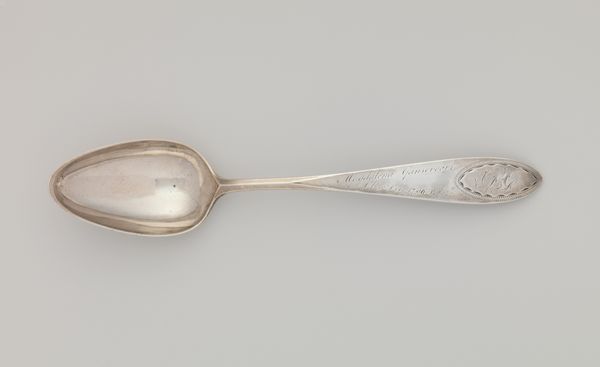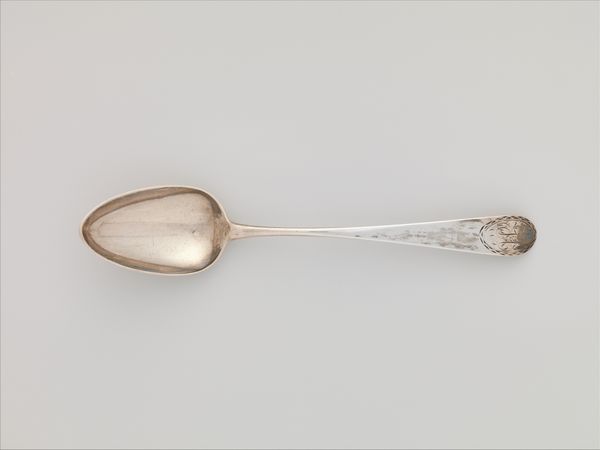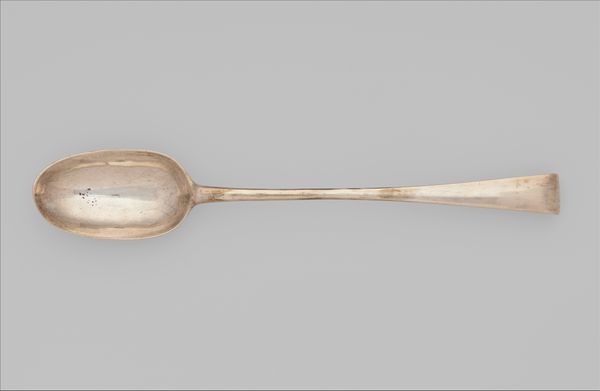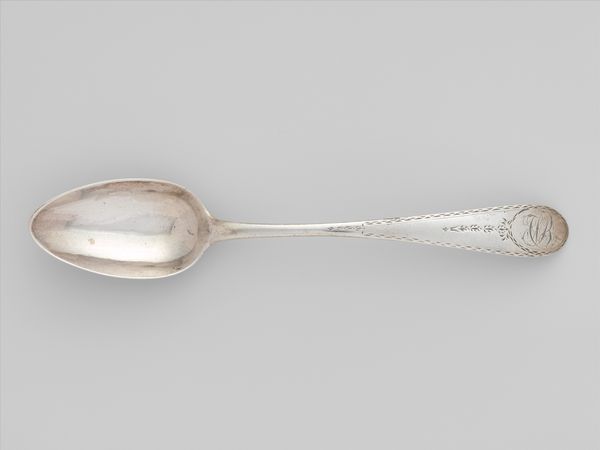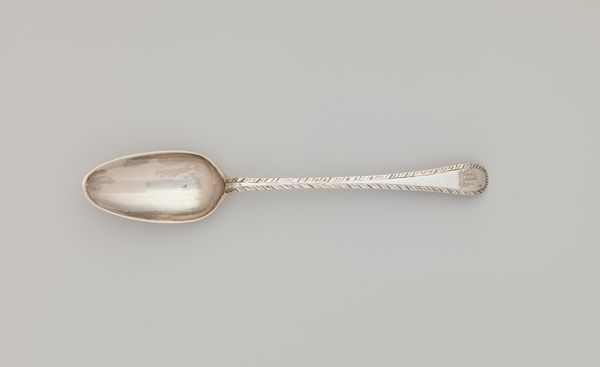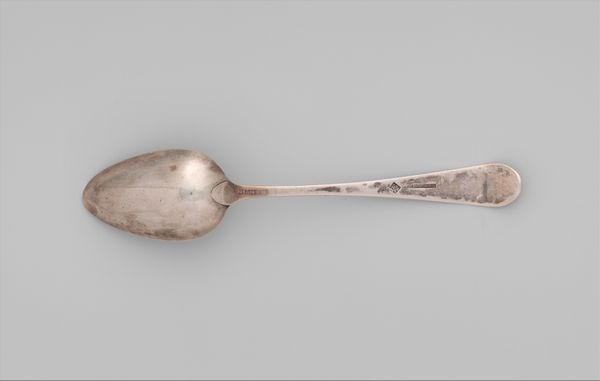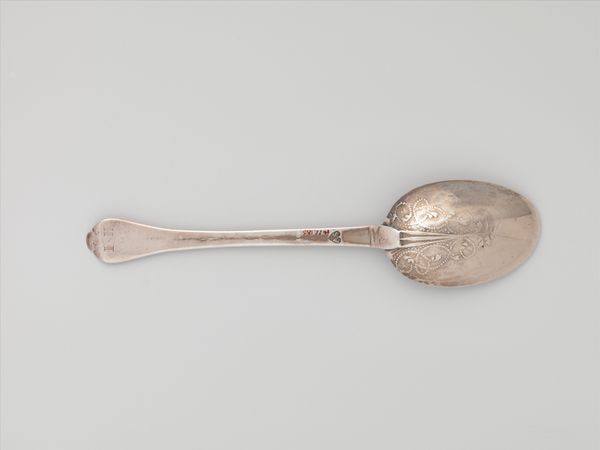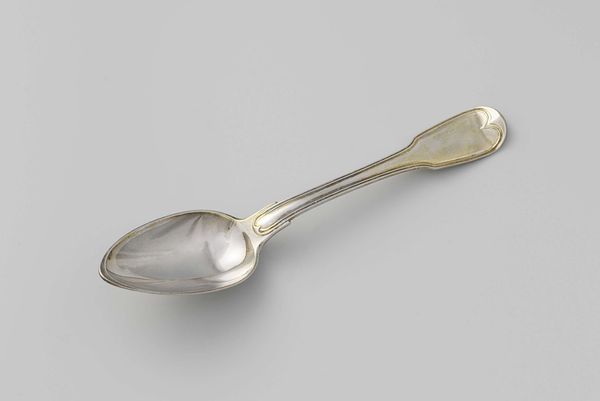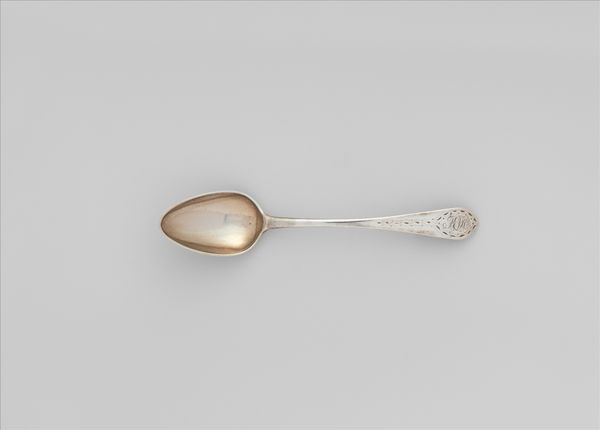
silver, metal
#
silver
#
metal
Dimensions: L. 8 1/8 in. (20.6 cm)
Copyright: Public Domain
Curator: Before us is a rather understated yet elegant piece. It's a silver spoon, dating back to between 1747 and 1750, currently held in the collection of the Metropolitan Museum of Art. Editor: Its polished surface and slender stem seem so stark in their simplicity; this single piece of tableware reflects societal values of wealth and exclusivity. Curator: It's true that owning silverware signified status back then. The availability of precious metals and skilled craftsmanship determined its societal function. A simple object like this was part of larger socio-economic structures. This "Spoon," as it's simply known, crafted from metal including silver, speaks volumes. Editor: Right, like who got to eat with it? Silver wasn’t for everyone. Its very existence underlines an imbalance of power and resources, marking an era deeply rooted in colonialism and unequal distribution. So who designed and commissioned it also signifies this privilege. Curator: Exactly! A silversmith's expertise played a key role. Silverware wasn't mass-produced; each piece reflects artistry. Museums safeguard these items and reveal aspects of economic activities and tastes through their historical settings and arrangements. It invites questions about display and what it can unveil. Editor: And its present location – The Met – transforms this tool of sustenance into a relic, isolated from the embodied practices surrounding food. How might indigenous communities perceive such historical objects related to wealth or the oppression endured through material hierarchies? Curator: I see it from your perspective. Museums carry the duty of contextualization, offering multifaceted interpretations—highlighting artisans' accomplishments alongside underlying class structures. This single object carries the echoes of a long, complex social narrative. Editor: Looking closer reveals this piece embodies the narrative around access, influence, inequality—and perhaps inspires some contemporary reconsideration of distribution and privilege—not solely celebrating aesthetics, skill, or craftsmanship of the past. Curator: Museums serve a crucial role when they present and probe diverse views about a historical period. Editor: To inspire more engagement with critical perspectives. Hopefully, future generations will continue reshaping norms around power and ownership with deeper recognition toward a truly more just culture.
Comments
No comments
Be the first to comment and join the conversation on the ultimate creative platform.
